
Dogwood, Ornamental Cornus: Planting and Pruning
Contents
The dogwood with ornamental stems in a few words
- Its bright red, yellow or orange stems are a winter must-have!
- Exceptionally hardy and disease-free, it grows quickly in any location.
- Decorative for both its foliage and bark, it’s perfect in borders, informal or clipped hedges, paired with small shrubs or ornamental grasses.
- White, bloodtwig or red osier dogwoods bring year-round interest to the garden.
- Pruning with secateurs or shears is essential to maintain vibrant stem colour.
Our expert's word
With fresh or flamboyant foliage in spring and autumn, subtle flowering followed by decorative fruits, and vividly coloured stems in winter, the Dogwood or Cornus is the ornamental shrub for all four seasons. Its upright habit and modest size make it versatile in any garden, whether contemporary or wild in style.
Cornus isn’t just a village in Aveyron—it’s first and foremost a highly decorative shrub! Whether planted as a standalone specimen, in a hedge, or within a mixed border, this extremely hardy shrub will reveal its splendour throughout the seasons.
The white, blood-twig, or stoloniferous dogwoods truly shine in winter. Their bare stems showcase their finely textured bark in vibrant red, mahogany, orange, yellow, or green, depending on the species. Their branches catch frost and the slightest winter light, standing out in the landscape—especially under snow.
Dogwoods with decorative bark are among the easiest shrubs to grow successfully in the garden! Adaptable and very easy to cultivate, they thrive in sun or partial shade and tolerate both moist and dry soils. They even appreciate chalky ground. They also work wonders near water. Prune them regularly to encourage beautifully coloured new stems.
Graphic and flexible, their stems are also prized for bouquets and Ikebana arrangements.
Botany
Botanical data
- Latin name Cornus
- Family Cornaceae
- Common name Cornouiller sanguin, Cornouiller blanc, cornouiller de Tartarie
- Flowering de mai à juin
- Height 2 à 3 m
- Exposure soleil ou mi-ombre
- Soil type Tous
- Hardiness - 20° à - 25°
Dogwoods (Cornus) are frequently found growing wild in damp deciduous and coniferous forests, meadows, woodland areas, and on rocky slopes at higher altitudes, in harsh and contrasting climates that demonstrate their hardiness. Native to much of Europe and Western Asia, the Cornus genus comprises around 45 species of shrubs and small trees. Among them are the decorative-stemmed dogwoods cultivated for their colourful winter stems: Cornus alba, Cornus sericea, Cornus sanguinea and Cornus stolonifera. They are also often found near water, as some species tolerate very moist soils.
These extremely hardy shrubs have a bushy, spreading and upright habit, as wide as they are tall. Up to 3m, but often less than 2m if pruned hard annually.
Fast-growing but modest in stature, reaching about 1.50 to 2m in spread, dogwoods can nevertheless reach 3m in 5 to 7 years if left unpruned.
These vigorous species include some with lower branches that form suckers or root into the ground, without the shrub becoming invasive. They can quickly form dense thickets. However, the species with decorative winter shoots are not allowed to spread: they are generally cut back each year to ensure brightly coloured stems, as only the new year’s growth is coloured – as they age, they turn a conventional brown and lose their charm. When coppiced like this, the plant maintains a compact size and continuously produces colourful young shoots.
Cornus or Dogwoods are highly decorative shrubs in both spring and winter.
In spring, their base produces new stiff, flexible branches that grow up to 2m tall and spread into a bush (depending on pruning and branching) up to 1.50m wide. They bear numerous simple, opposite, oval and distinctly veined deciduous leaves. Light green, grey-green or bright green, variegated with white, yellow or pink depending on the cultivar, they turn red, purple, orange or golden yellow in autumn before disappearing entirely by mid-autumn.
After this firework display in all shades of copper and purple, dogwoods shed their leafy attire for winter. It is then that they amaze with the colour of their stems, adorned with red, yellow or orange bark, spectacular throughout winter when the garden is bare.
The insignificant flowering is not their main attraction: it begins in May-June and ends in July. In late spring, small flowers bloom in flattened cymes, creamy white, 2 to 5cm in diameter. They attract pollinators and enliven the garden.
The flowers give way in autumn to clusters of berries (cornelian cherries or drupes) that are green, then red and finally bluish-black. They resemble pearls or small olives that are much loved by birds. Only those of the Cornelian cherry (Cornus mas L), a large Cornus not part of the coloured-stem group, are edible. This fruiting adds to the shrub’s decorative appeal.
Decorative-stemmed dogwoods grow in all regions and in all non-scorching exposures, preferably in full sun or partial shade in southern climates. Choose cool locations, or spots with “cooling” shade provided by a hedge or wall. While relatively shade-tolerant, their growth is seriously slowed by overly dense shade. Soil type is unimportant, they thrive in all soil types, both acidic and calcareous. However, ensure good moisture conditions during hot, dry periods.
The wood is straight, strong yet flexible, hard as horn. It was once prized for making arrows and is still used today in basketry, like willow osiers.
Read also
Pruning cornus to maintain their coloursMain species and varieties
Varieties with decorative bark offer multiple seasonal interests. The main selection criteria are the colour of the twigs in winter and the foliage in spring and autumn, sometimes including the growth habit which can be more or less compact and bushy.
- The Cornus alba or white dogwoods
Native to Northern China and Siberia, the white dogwood comes in many particularly striking varieties. Easy to grow, this highly vigorous small shrub with an upright, open habit reaches 2m in height and grows rapidly in all soil types. It tolerates poorly drained soils well, making it ideal for waterside planting. In winter, all Cornus alba display red bark which can be very dark. The foliage varies between cultivars but all offer beautiful autumn hues. The small, yellowish-white flattened cyme flowers, though inconspicuous, give way to white berries that turn bluish by late summer. The wood colour differs by variety: ‘Kesselringii’ with its nearly black stems, Cornus alba ‘Baton Rouge®’ with its bright red wood that adapts to all well-drained soils, even dry, poor, stony or chalky ones, or the Cornus alba ‘Sibirica’ or Siberian Dogwood, undoubtedly the best-known and perhaps most widely used variety with its bright red stems.
- The Cornus sanguinea (common dogwood, bloodtwig dogwood)
The standard Cornus sanguinea, also called “female dogwood” or even “Norman olive”, is equally prized for its coppery golden-yellow autumn colours. Like the white dogwoods, it displays exceptional stems after leaf fall. This shrub has a broad, upright branching structure reaching 1.8-2m tall and 1.2m wide. In late summer, it bears small dark red fruits that turn almost black by September. It has produced two exceptional cultivars: ‘Midwinter Fire’ with its shiny orange-yellow-red stems, and ‘Winter Beauty’ (or ‘Winter Flame’) whose strikingly bright red-tipped stems earned it the nickname “Cornus Fluo”.
- Cornus stolonifera or Cornus sericea
This species native to North America includes one of the most remarkable varieties for warming up the garden in the cold season. Originally, the species has red wood. Widely cultivated, the Cornus sericea ‘Kelseyi‘ is compact and creeping, forming a rounded, wide groundcover shrub that spreads over the years (2m × 4m high) with light green foliage turning orange-yellow in autumn and yellow-green stems with reddish-brown tips. A fast-growing plant, it can become invasive as branches root easily where they touch the ground. It’s commonly used to cover slopes and garden borders or to stabilise soil on inclines. The shoots of C. sericea ‘Flaviramea’ or ‘yellow-twig dogwood’ are a vibrant yellow-green in winter, creating a lovely contrast with red dogwoods.
Discover Olivier’s video on ornamental-stemmed dogwoods!

Cornus alba Baton Rouge - Red Dogwood
- Flowering time June, July
- Height at maturity 1,75 m

Cornus alba Kesselringii - White Dogwood
- Flowering time June, July
- Height at maturity 3 m

Cornus alba Siberian Pearls - White Dogwood
- Flowering time June, July
- Height at maturity 2 m

Cornus alba Sibirica Variegata - Variegated Dogwood
- Flowering time June, July
- Height at maturity 2,50 m

Cornus sanguinea Midwinter Fire - Common Dogwood
- Flowering time June, July
- Height at maturity 3 m

Cornus alba Aurea - White Dogwood
- Flowering time June, July
- Height at maturity 2 m

Cornus stolonifera Flaviramea - Stoloniferous Dogwood
- Flowering time June, July
- Height at maturity 2 m

Cornus sanguinea Winter Beauty - Common Dogwood
- Flowering time June, July
- Height at maturity 2,50 m
Discover other Coloured wood Dogwood
View all →Available in 1 sizes
Available in 2 sizes
Available in 3 sizes
Available in 2 sizes
Available in 1 sizes
Available in 2 sizes
Available in 1 sizes
Available in 4 sizes
Available in 1 sizes
Available in 1 sizes
Planting
Where to Plant Ornamental Bark Dogwoods?
Cornus are easy-to-grow shrubs. Undemanding when it comes to soil type and exposure, they thrive in all regions of France. They grow well in heavy, clayey, moist soils, but also in more free-draining soils.
The soil type matters little (sandy, loamy or clayey) and can even be alkaline. This is an easy shrub that succeeds in rich substrates. It is low-maintenance.
Dogwoods perform best in locations where they catch low sunlight. They can tolerate light shade, but full sun suits them well. The common dogwood (Cornus sanguinea) is relatively shade-tolerant, though its growth slows in overly dense shade. Prefer cool spots or areas with “refreshing” shade: mixed into a loose or low hedge, at the back of large borders, on woodland edges to create a transition with the countryside, or beside a low wall.
Wider than tall (1 to 2 m), place dogwoods in a loose hedge, at the back of perennial borders, or among other shrubs, paired with dark-leaved evergreens to highlight the colours of their foliage and stems.
Cornus alba and C. stolonifera tolerate heavy, very wet soils and are ideal for planting along watercourses; the water reflects their colourful stems in winter.
Water young plants generously during hot, dry summers. Dogwoods are very hardy and robust, easily withstanding temperatures below -20°C and requiring no winter protection.
Container cultivation is possible—opt for a cultivar like ‘Kelseyi’, an excellent groundcover, paired with Skimmias, Heucheras, Yarrows, and Hydrangeas on a terrace, while monitoring summer watering.
When to Plant?
The bare-root varieties we offer—ideal for creating low-cost hedges—should be planted in autumn, from October to early December. Potted varieties can be planted year-round (except during frost), though the ideal planting periods remain autumn and late winter. The best window is mid-September to early December.
How to Plant?
- For standalone planting, space plants at a distance equal to their mature height. For mixed hedges, space them just 1 m apart. Plant in compact groups of 3 to 5 (1 per m²) to create a striking mass effect, and don’t hesitate to mix colours for contrast by pairing them with evergreen foliage.
- Dig a hole twice the size of the root ball—dogwoods need space (at least 0.60 to 0.80 m in width and depth).
- Spread a layer of gravel at the bottom for drainage. Place the root ball in the hole.
- Backfill, ensuring the plant’s crown sits level with the soil surface.
- Firm the soil around the base.
- Create a watering basin—young plants must never dry out!
- Water thoroughly after transplanting and for 2–3 weeks. Once established (after 2+ years), no watering is needed, even during temporary drought.
Maintenance and Pruning
Dogwoods offer excellent resistance to diseases and pests. There is little to worry about. It is mainly poor growing conditions that may lead to leaf scorch or root rot.
To obtain new colourful stems each year, prune the old branches in late winter every year or every two years depending on the species (and from the first year after planting), close to the base, more or less short depending on the desired shape as the bark loses its colour as the wood ages.
Depending on the vigour, remove a good third of the branches, the thickest and least colourful ones, without shortening the remaining branches. Pruning is not an issue as most dogwoods grow very quickly: cut back to 30 cm from the ground if you want a very compact shrub of 1 m in height or just one-third to half of the branches to obtain a larger shrub.
Pruning also depends on the cultivar: slow-growing C. alba ‘Kesselringii’ should only be coppiced every two or three years. Prune at a slight angle above a bud. Carry out the operation in the same way on each branch. Remove all dead wood at the base of the shrub.
You can also cut this small shrub back completely – it will withstand it very well but will take 2 years to form a nice clump again. This practice prematurely ages the base and leaves an unsightly empty space: pruning on a two-year cycle will encourage a more natural and flexible shape, even if the colour of the branches loses some of its brilliance. Spread a thick layer of compost at the base of the plant to encourage regrowth.
For young plants, and at least for their first two winters, mulch in late autumn or before the first frosts. Fertiliser applications are not at all essential. Leave fallen leaves at the base of the shrub – these form a natural mulch and enrich the soil as they decompose.
Do not let plants under 2 years old dry out. Once truly mature, no further maintenance is needed.
Propagation
Sowing
Propagation of dogwoods with coloured stems is easily done through cuttings; sowing is hardly recommended.
Layering
Particularly suited to woody plants (those with stems containing wood), layering allows you to easily, quickly and inexpensively obtain plants identical to the parent plant. This technique involves encouraging roots to form and develop on a portion of a stem that is temporarily buried while still attached to the parent plant. In spring or early summer, bury long, low branches in a 40 cm deep trench until they root. Cornus branches tend to root where they touch the soil. Separate them in autumn or the following spring and grow them in pots for a year before planting out.
Cuttings
Taking cuttings is a quick way to produce many dogwood plants from a single shrub. The success rate is particularly high. For propagating Cornus, semi-hardwood or semi-ripe cuttings taken in July-August are ideal:
- Take cuttings from lateral shoots that have ripened (i.e., stems that are transitioning from softwood to hardwood). At this stage of development, the rooting of the cuttings is better for successful propagation.
- Insert the cuttings into a mix of sand and peat and keep them at a temperature of 15–18°C.
- Repot into a mix of soil and compost as soon as new leaves appear and overwinter in a frost-free location.
→ Learn more about propagating dogwoods in our tutorial!
Pairing
Versatile, this shrub adapts to all gardens, whether contemporary or wild in style. A king of winter scenes, the dogwood pairs well with a multitude of plants. In a free or low hedge alongside various shrubs, as a backdrop in beds combined with tall grasses, variegated and evergreen plants, or in pots on a terrace – whatever the size or style of your garden, there will always be a dogwood to provide beautiful decoration throughout the seasons. Planted in groups of the same variety, they will add a colourful touch to the back of the garden. In winter, the bare, colourful stems will serve as a backdrop for Hellebores and early bulbs or stand out powerfully in grey and gold compositions. Don’t miss out on this shrub that brightens up winter, and discover our inspiring planting ideas to incorporate it into your garden!
Discover more planting combinations in our advice sheet: “Dogwoods with Decorative Stems – 9 Successful Planting Combinations”
To go further
- Our wide range of Cornus features the best varieties – discover them in our online nursery,
- Read Pierre’s blog post: “Baton Rouge, a dogwood that lives up to its name!”
- Olivier’s video: The Cornus
- Care guide: Ornamental Dogwoods: 9 Successful Planting Combinations
- Care guide: 12 Ornamental Dogwoods: The Most Beautiful Varieties
- Care guide: The Most Colourful Ornamental Dogwoods
- Care guide: 10 Dogwoods for Small Gardens
- Our article: A Dogwood Hedge
- Watch our video on Pruning Ornamental Dogwoods
- Subscribe!
- Contents


































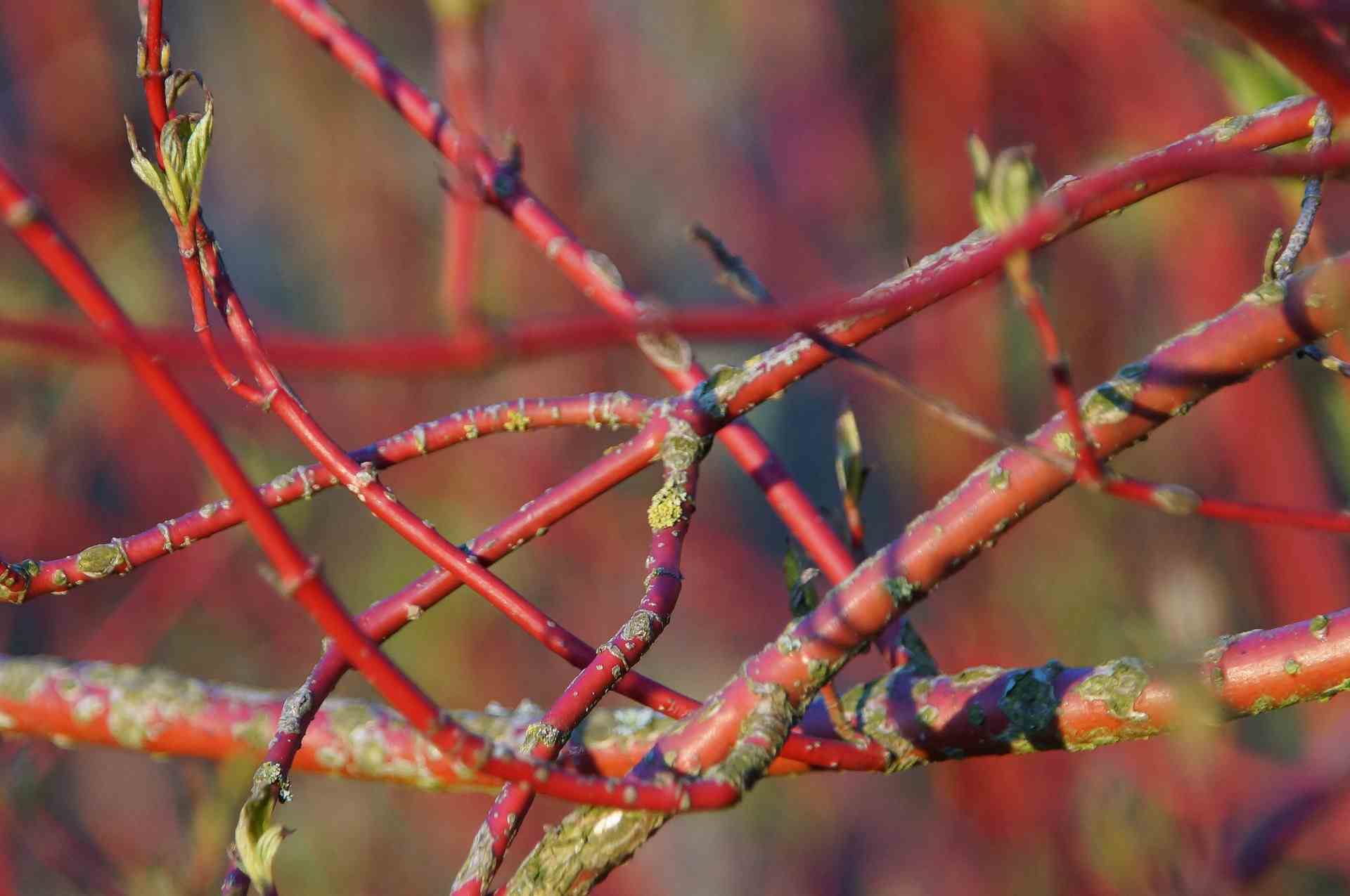
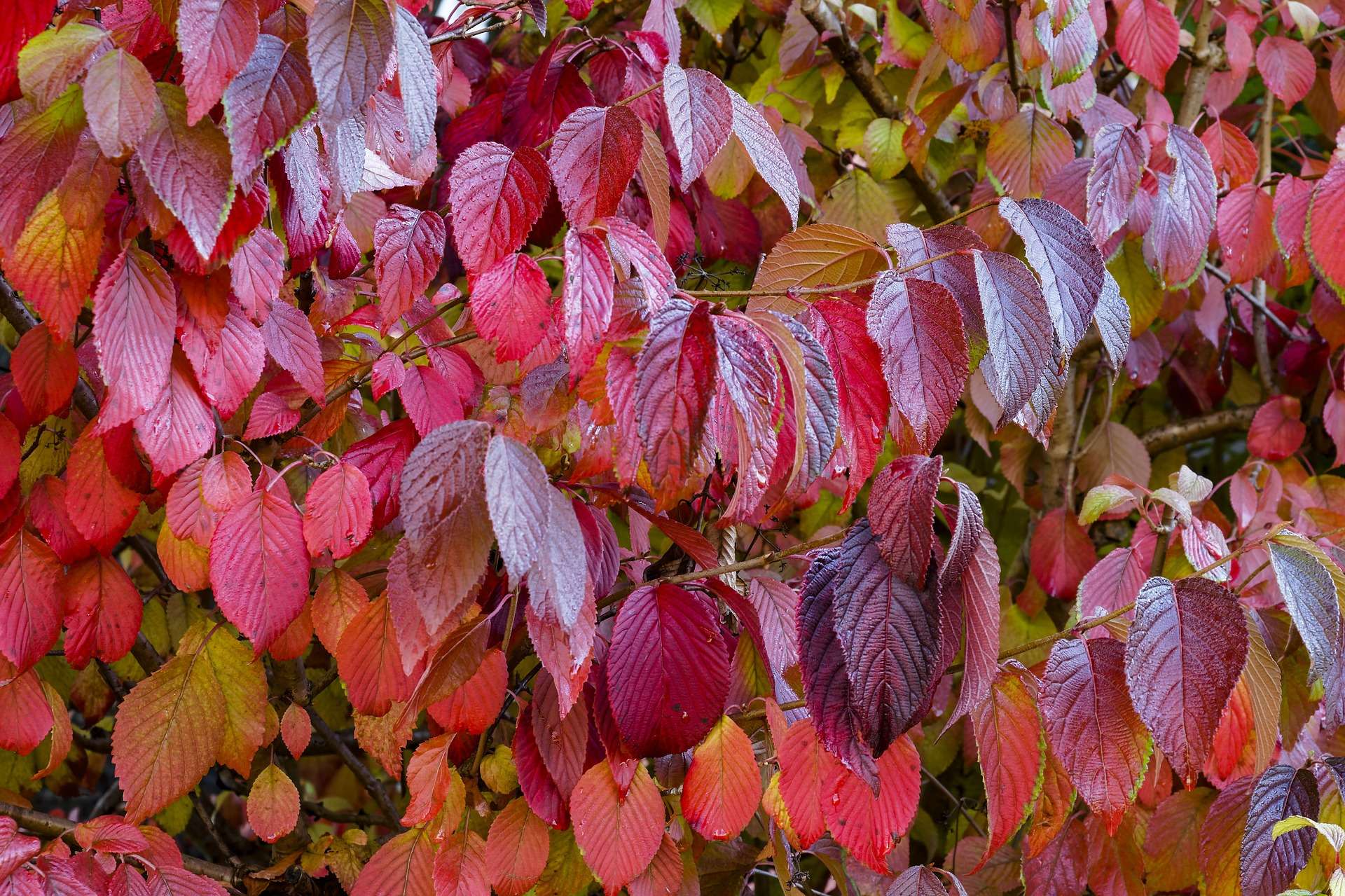

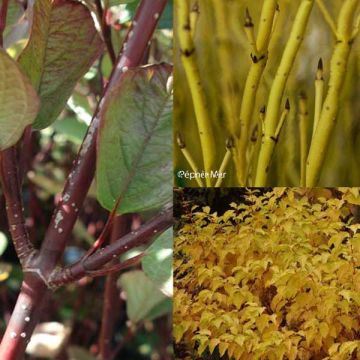
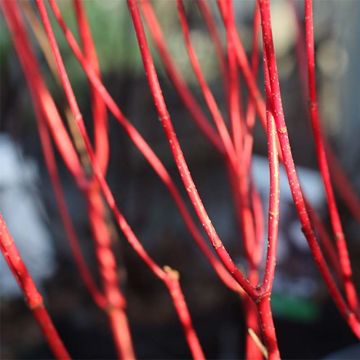
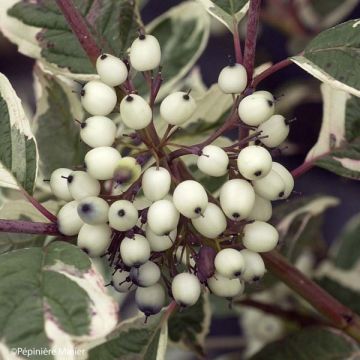

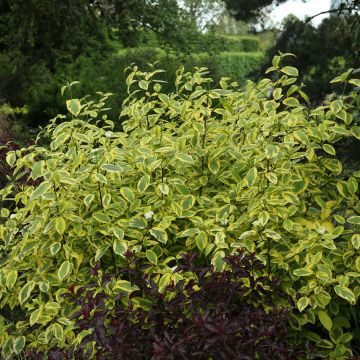

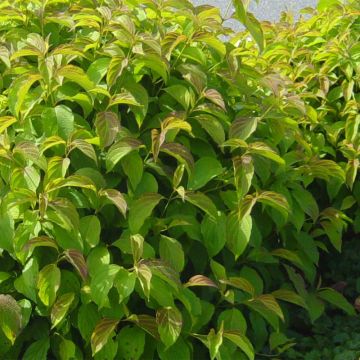

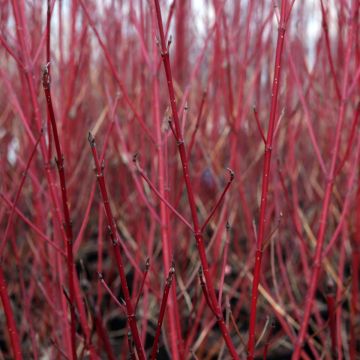
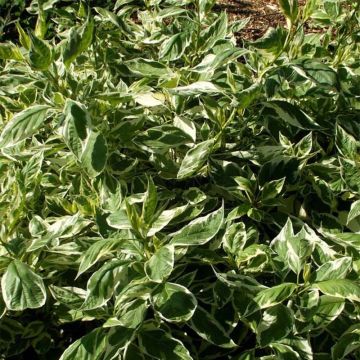
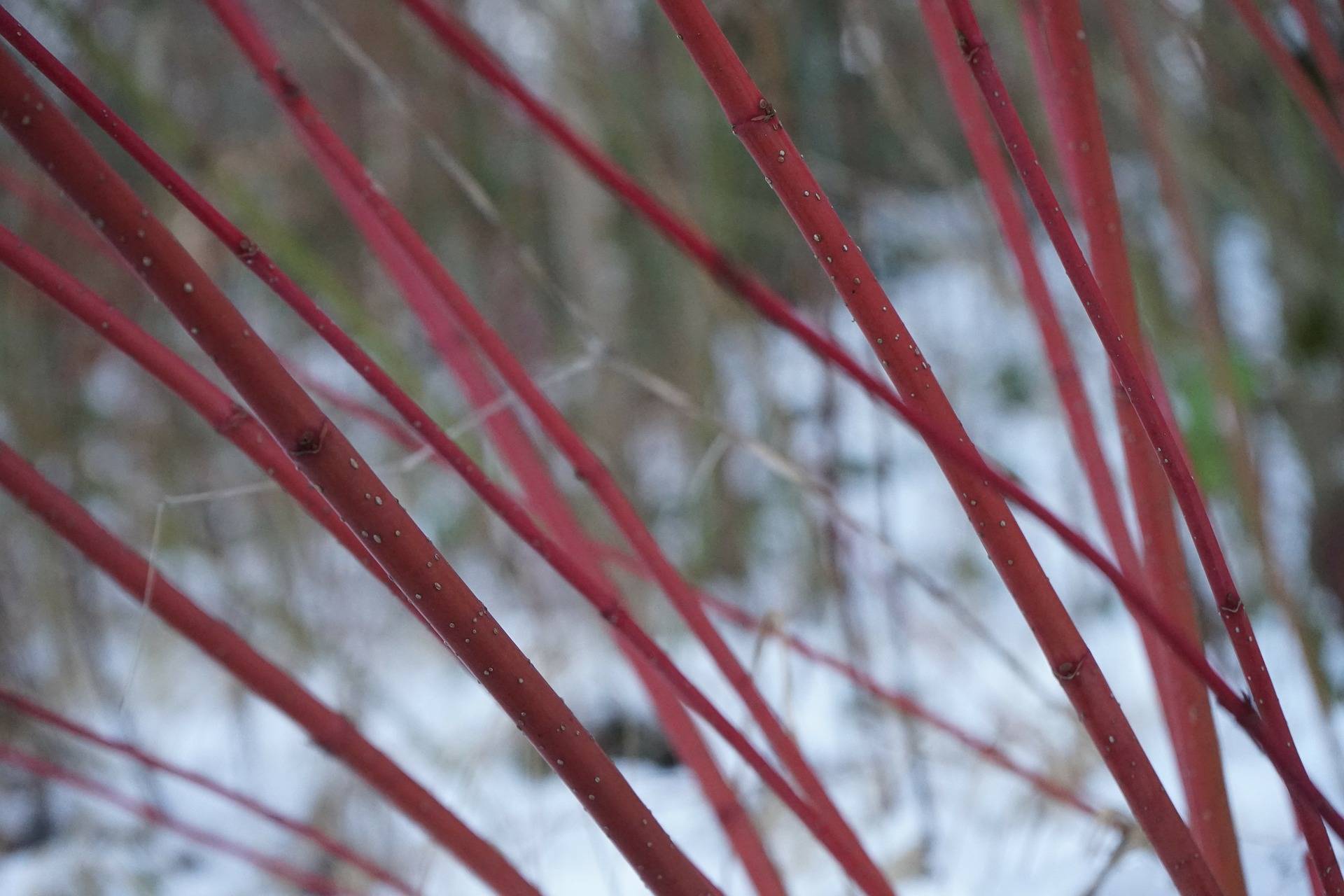
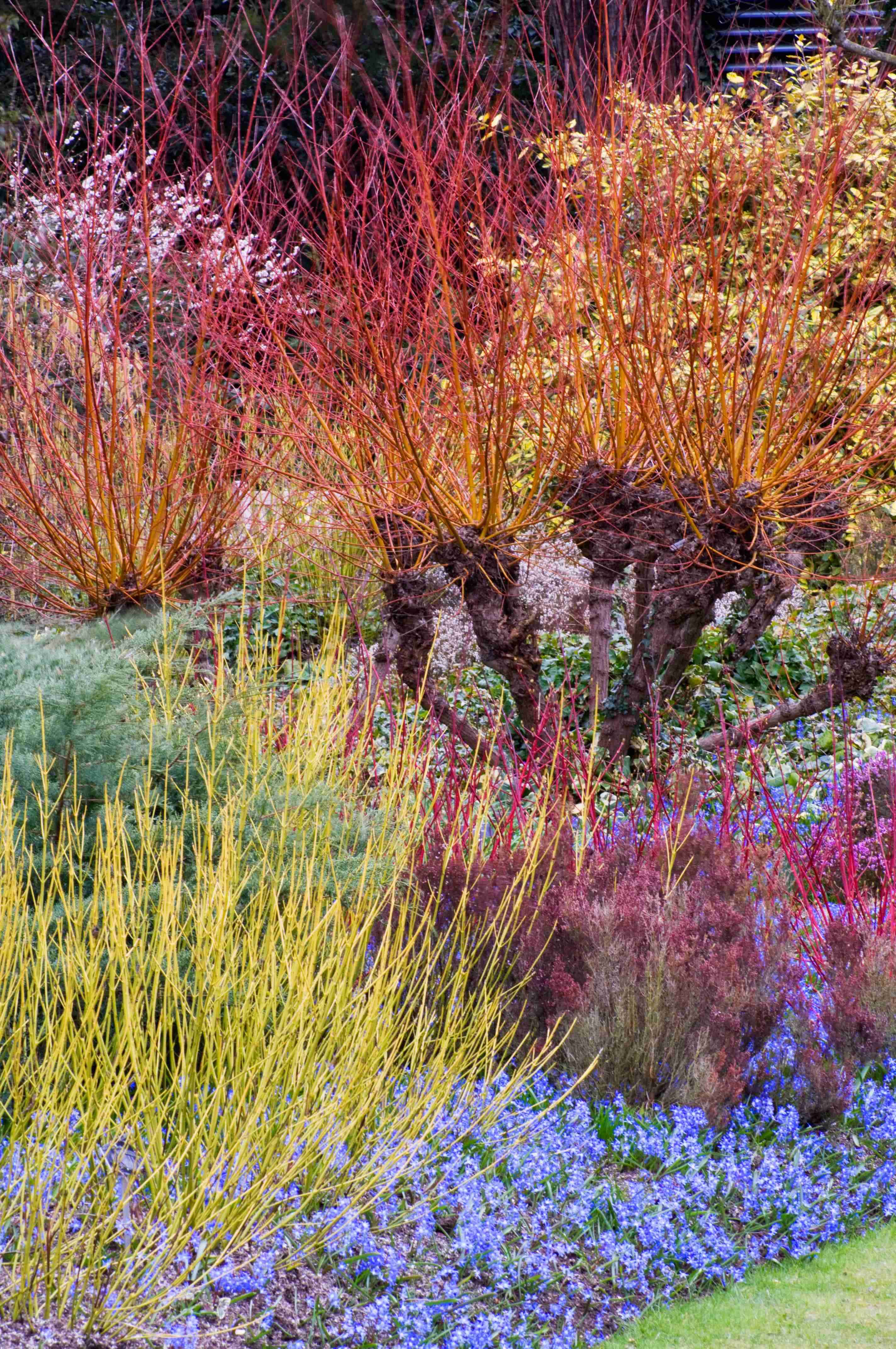
Comments